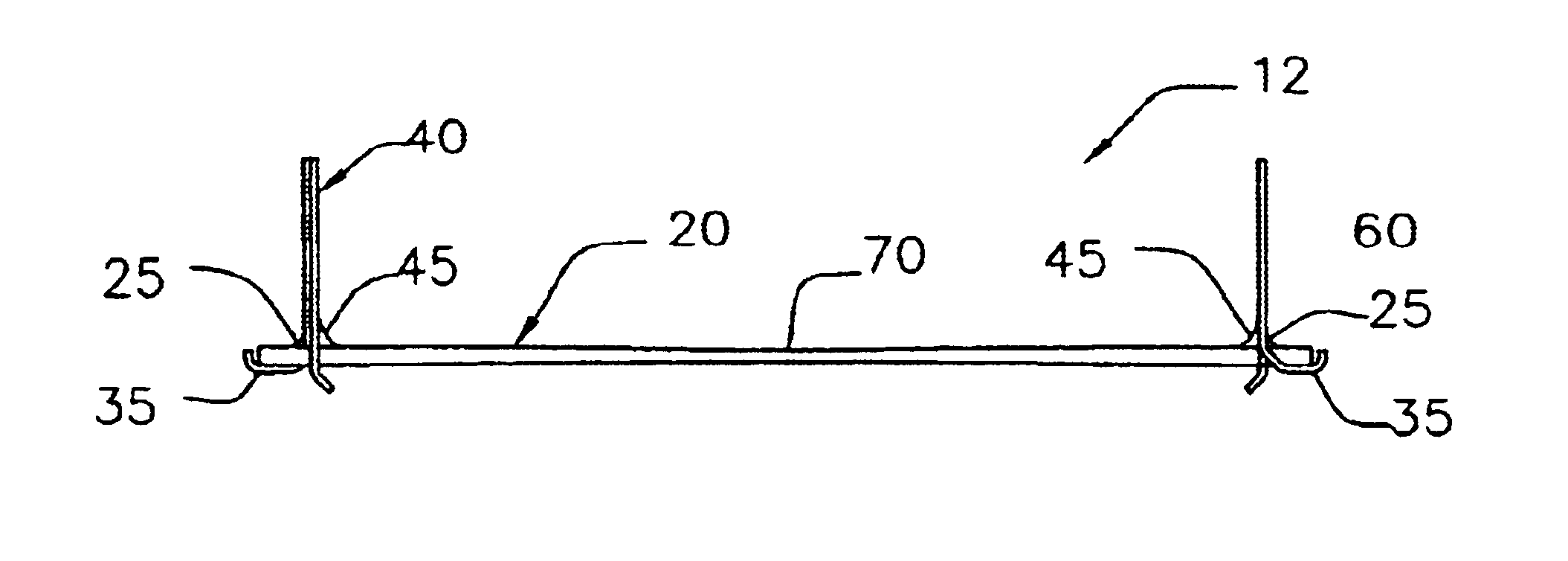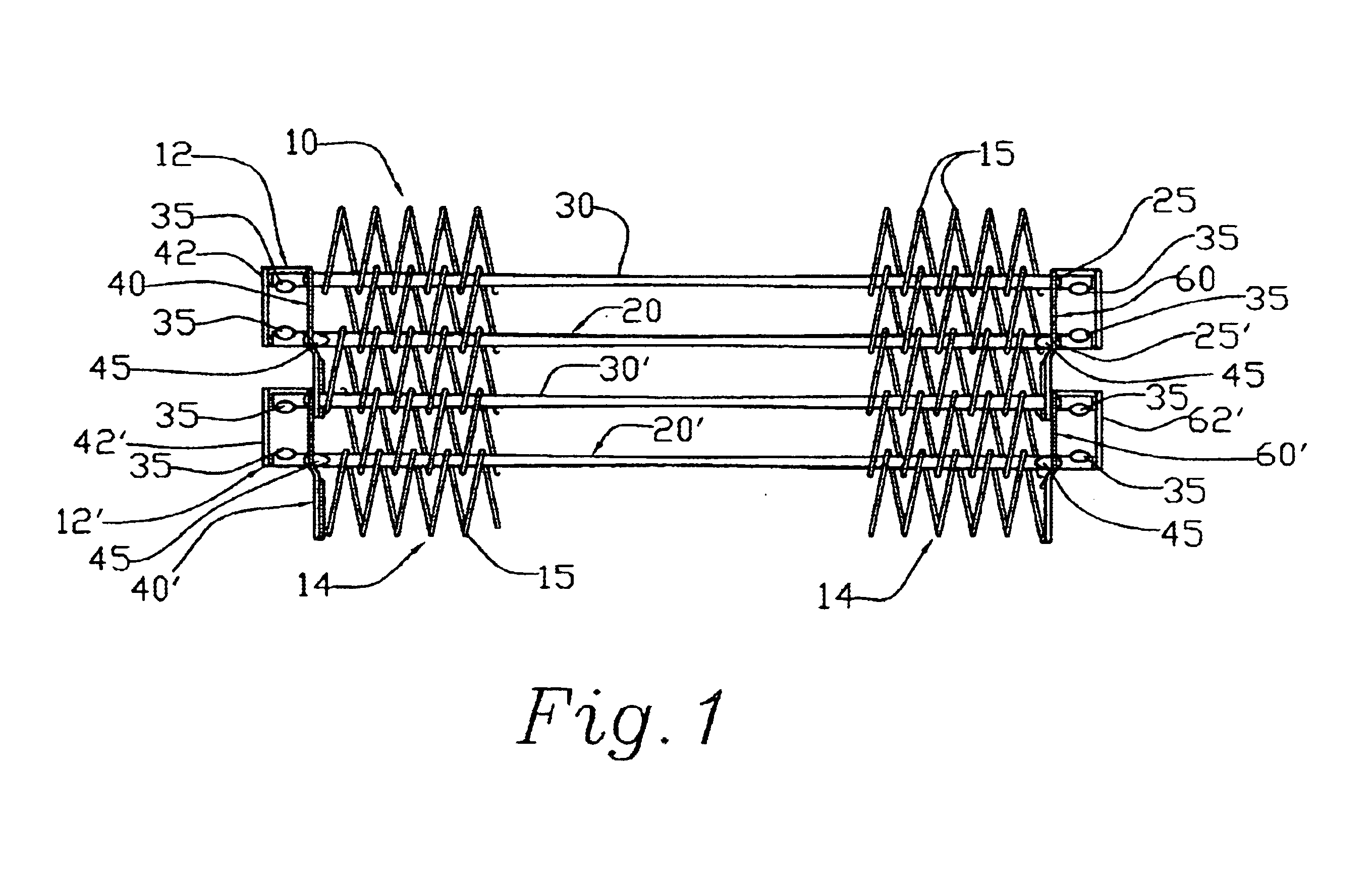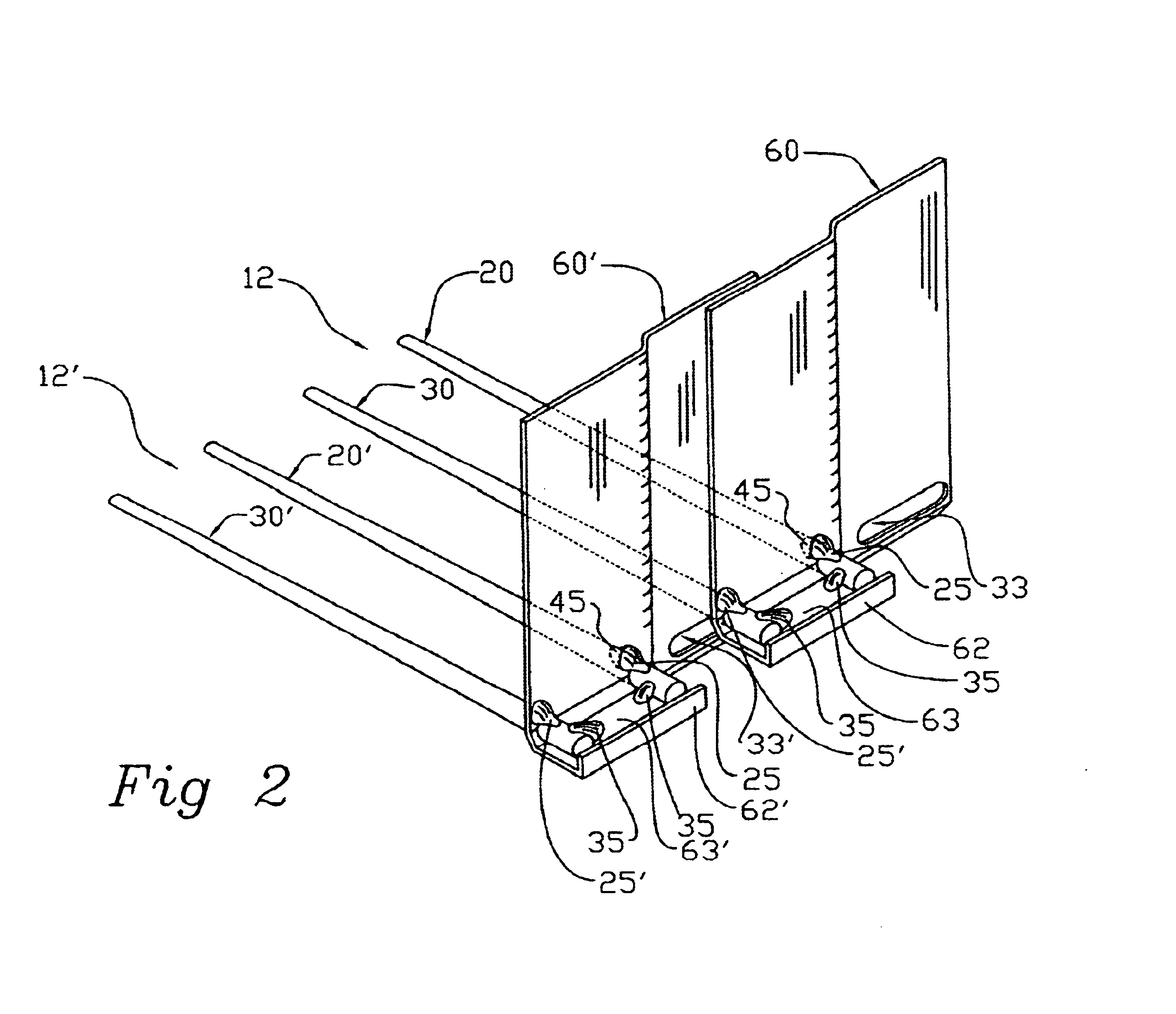Self-stacking conveyor belt and method
a conveyor belt and self-stacking technology, applied in the direction of conveyors, transportation and packaging, etc., can solve the problems of entire machinery being taken off line at a substantial cost to the operator, fatigue cracks in the welded joints between the side plates and the transverse rods, and the fatigue limit of the welded joints and adjacent areas reached
- Summary
- Abstract
- Description
- Claims
- Application Information
AI Technical Summary
Benefits of technology
Problems solved by technology
Method used
Image
Examples
Embodiment Construction
)
There is shown in FIG. 1 an improved endless self-stacking conveyor belt 10, similar to the conveyor belts disclosed in U.S. Pat. Nos. 4,603,776, 4,941,567 5,190,143 and 5,803,232 and incorporated by reference herein. The conveyor belt 10 includes a plurality of transversely aligned interlocked links, 12, 12'. Each link 12, 12' includes two traverse rods 20, 30, 20', 30' and two vertically aligned side plates 40, 40', 60, 60 ' rigidly connected to the opposite ends of the two transverse rods 20, 30, 20', 30', respectively. A flexible mesh 14 made of a plurality of small loop structures 15 that individually wrap around adjacent transverse rods 20, 30 is disposed between the side plates 40, 40', 60, 60 ' and used support products on the conveyor belt 10. The conveyor belt 10 disclosed herein is specifically designed to overcome the development of fatigue cracks between transverse rods 20, 30 and the two side plates 40, 60 on each link 12, 12' caused by repeated cyclical stress on the...
PUM
 Login to View More
Login to View More Abstract
Description
Claims
Application Information
 Login to View More
Login to View More - R&D
- Intellectual Property
- Life Sciences
- Materials
- Tech Scout
- Unparalleled Data Quality
- Higher Quality Content
- 60% Fewer Hallucinations
Browse by: Latest US Patents, China's latest patents, Technical Efficacy Thesaurus, Application Domain, Technology Topic, Popular Technical Reports.
© 2025 PatSnap. All rights reserved.Legal|Privacy policy|Modern Slavery Act Transparency Statement|Sitemap|About US| Contact US: help@patsnap.com



